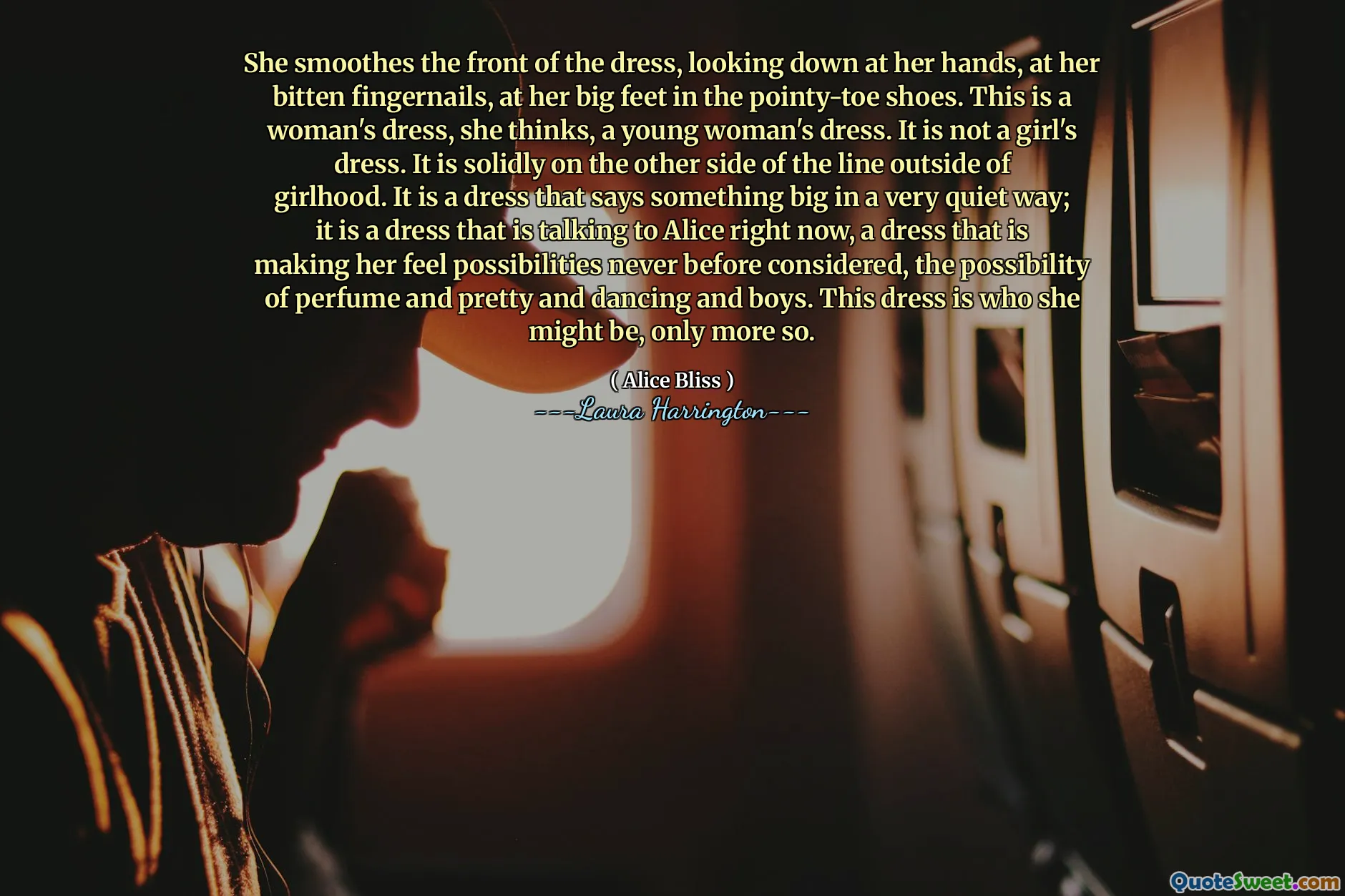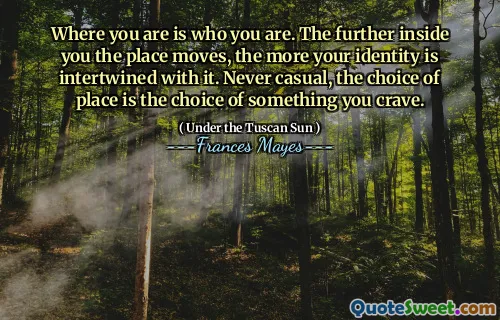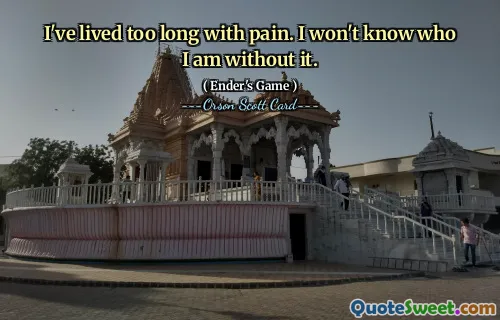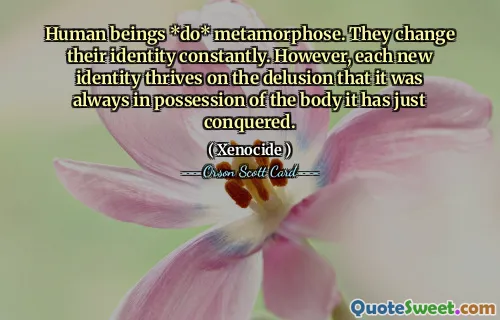
She smoothes the front of the dress, looking down at her hands, at her bitten fingernails, at her big feet in the pointy-toe shoes. This is a woman's dress, she thinks, a young woman's dress. It is not a girl's dress. It is solidly on the other side of the line outside of girlhood. It is a dress that says something big in a very quiet way; it is a dress that is talking to Alice right now, a dress that is making her feel possibilities never before considered, the possibility of perfume and pretty and dancing and boys. This dress is who she might be, only more so.
[This passage eloquently captures a pivotal moment of transition and self-awareness. The dress symbolizes more than just fabric; it embodies the threshold between girlhood and womanhood, a silent declaration of identity and possibility. When Alice notices her own features—the bitten fingernails, the large feet—she is acutely aware of her current state, yet the dress acts as a catalyst, awakening her dreams of a different future. It represents change, growth, and the allure of becoming someone new—more confident, more expressive, more open to the pleasures and complexities of adulthood. The quietness of the dress's message parallels the subtle, sometimes confusing journey of adolescence, where internal transformations are often accompanied by outward signs, like clothing. This scene highlights the significance of small objects and moments in marking emotional and developmental milestones. It resonates deeply, reminding us that artifacts such as clothing carry layered meanings, serving as symbols of change and aspiration. The dress becomes a metaphor for embracing potential and the promise of self-discovery, emphasizing that even mundane objects can be powerful conduits for realizing who we might become. Through this, the narrative captures a universal truth about growing up: it's not just about aging physically, but about internal evolution and the awakening of desires and possibilities previously unexplored.]






